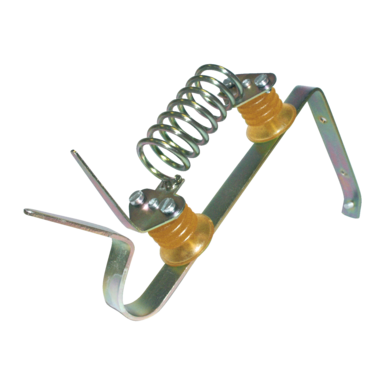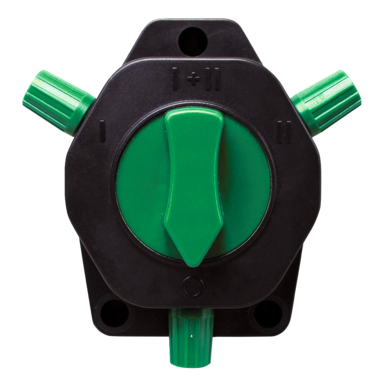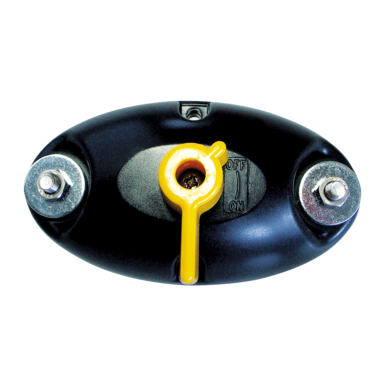Lightning protection
- Safe lightning conductors
- From lightning protection chokes to fence switches
horizont Lightning protection choke
- Effectively protects the electric fence device from damage caused by lightning and excessive voltage
horizont Fence switch
- For switching current, independent of the Electric fence unit
- Two outputs can be switched
- Dimensions L*H: 6.0 cm x 12 cm
horizont On/off switch
- For switching the power on / off independently of the electric fence unit
- For switching on / off individual fence sections
- Dimensions L*H: 12 cm x 6.5 cm
Lightning protection for your pasture fence
Topic overview
- Intended use
- Functionality
- Installation and assembly tips
- Legal regulations
- Practical tips
- Recommended accessories
Why do you need lightning protection?
A well-grounded pasture fence has low resistance and is therefore susceptible to lightning strikes. Without lightning protection, lightning would strike through the conductor material via the fence connection into the pasture fence unit and, as a result of overvoltage, destroy it and possibly the house electronics behind it.
In addition to the possible material damage, the herding safety of your fenced-in animals can be significantly impaired in the event of a power failure. Therefore, the installation of a lightning protection system on your pasture fence system is also a considerable advantage for insurance reasons.
By using a lightning protection choke, a lightning strike to the pasture fence unit is warded off and diverted into the ground.
How does lightning protection work?
The lightning protection choke is mounted between the fence system and the electric fence unit and diverts the overvoltage caused by the lightning strike directly further into the earth. Since the coil of a lightning protection choke represents too great a resistance for the lightning and thus blocks the flow, it looks for another path and flows off to earth via the so-called spark gap.
How do you install a lightning protection/choke?
Mounting and installation tips:
The lightning protection choke should be installed as close as possible to the earth. Using high-voltage insulated supply cables, the lightning protection is connected to the pasture fence unit and the conductor material. The lightning protection is also connected to the earth/ground stake via an earth cable. It should be noted that the lightning protection and the electric fence unit are connected to one and the same earthing system.
What are the legal regulations?
Regulation according to VDE:
Electric fence devices for supplying electric fence systems on pastures must not be placed in rooms with a fire hazard such as barns, threshing floors and stables. To prevent lightning damage, a lightning protection device must be installed in the fence supply line before it is introduced into the building.
When earthing the pasture fence unit, a minimum distance of 10 m from other earthing systems (e.g. house earthing) must also be maintained in order to prevent the voltage from flashing over in the event of a lightning strike. The distance between the earthing of the electric fence unit and the lightning protection system should also be 10 m.
Further practical tips
- If necessary, you can mount a fence switch between the lightning protection and the fence:
. This not only allows you to switch the power supply to different pastures separately, but can also be used as a preventive measure against lightning strikes. When a thunderstorm is approaching, you can use the fence switch to isolate your pasture fence device incl. lightning protection choke from the pasture fence in advance. The upstream fence switch therefore diverts the lightning into the earth without it reaching the lightning protection or the electric fence unit.
- Attention: Electric fence units with two fence outlets also require two lightning protection devices.
Which accessories are recommended?
- Fence switch
- Earth and feeder cable




